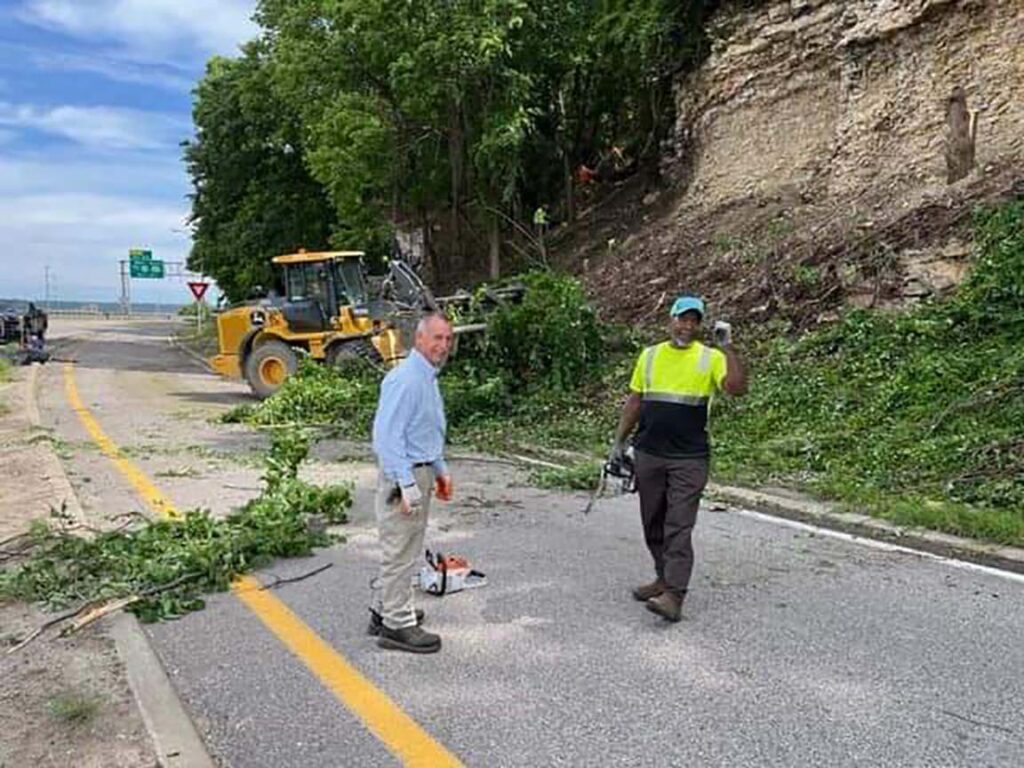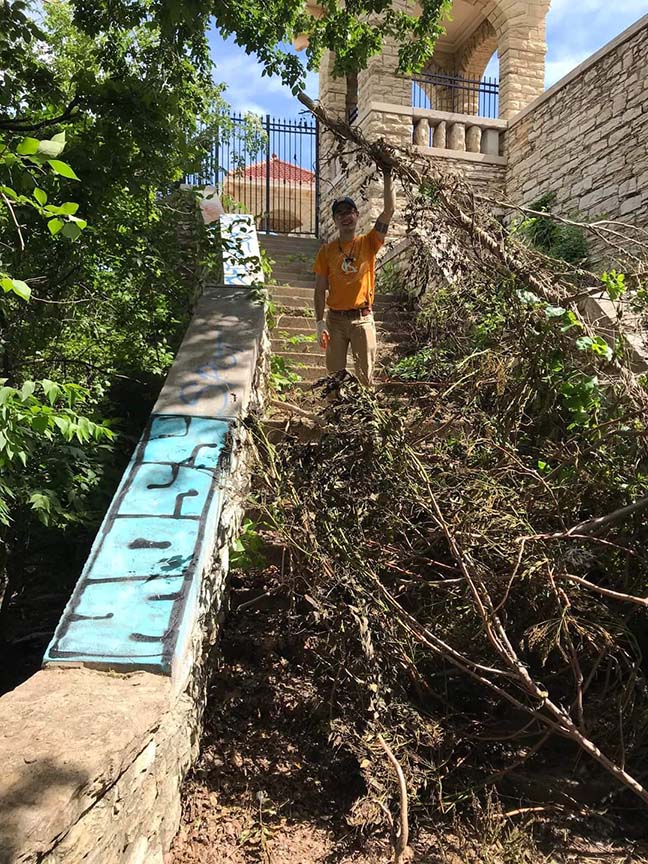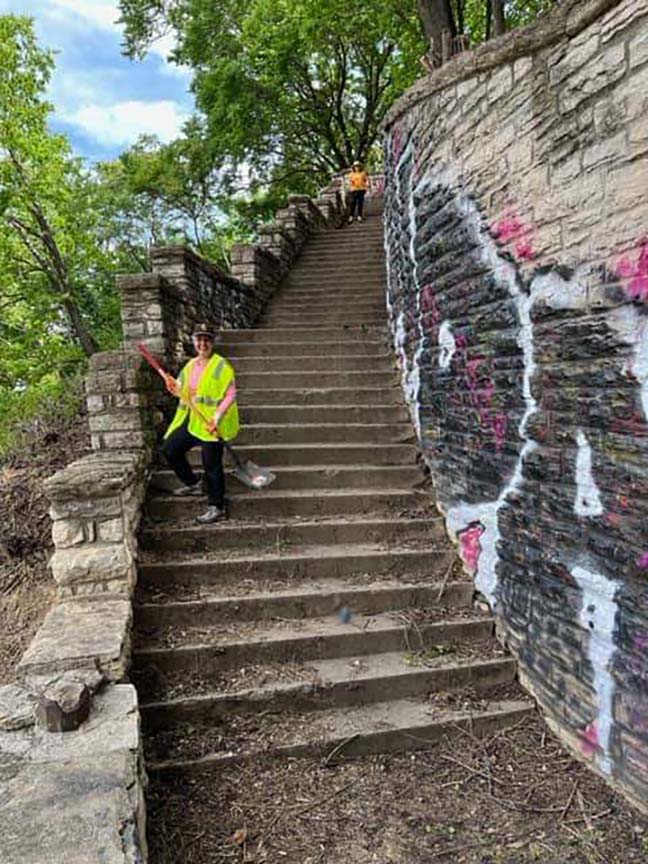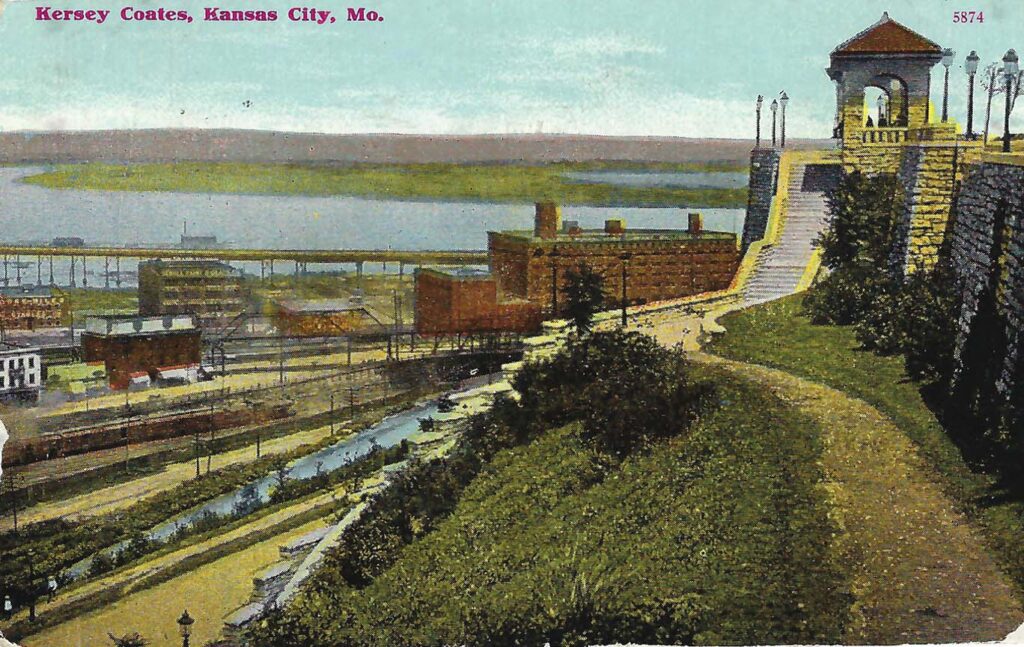
Michael Bushnell
Publisher
West Terrace Park was one of Kansas City’s first parks, originally proposed by landscape architect George Kessler in his plan to develop a “city within a park” in Kansas City.
Kessler, then a superintendent in the village of Merriam, Kan., was hired in 1892 by Kansas City’s new Park Board to design a series of parkways and boulevards for the city. Kessler’s initial plan centered on redeveloping three key areas of Kansas City into attractive areas for public use. North Terrace Park, Penn Valley Park and West Terrace Park were the projects initially undertaken by the Park Board led by August R. Meyer.
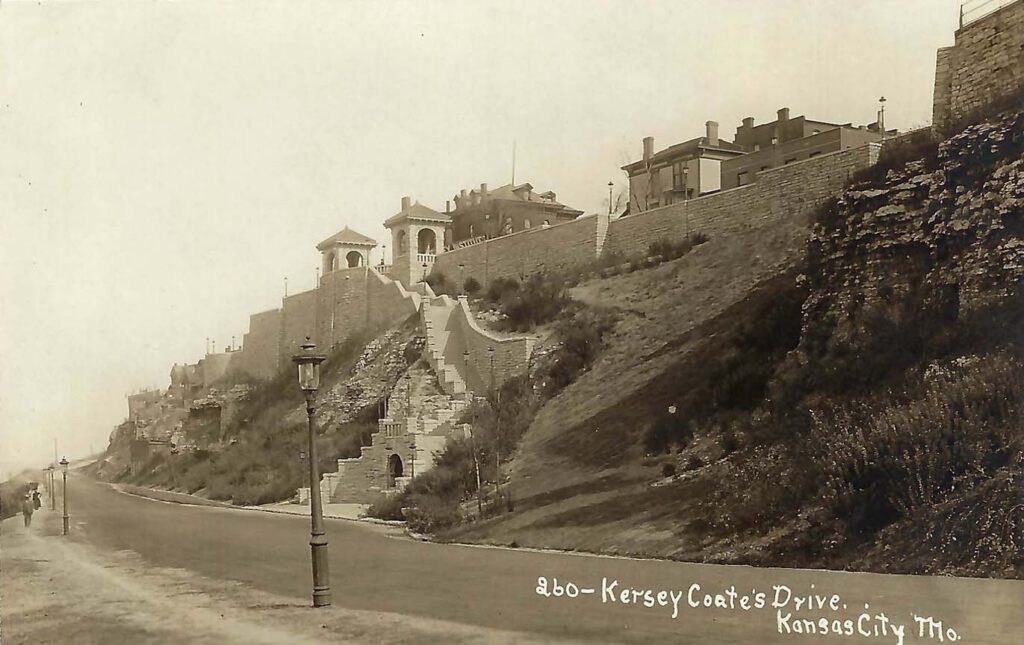
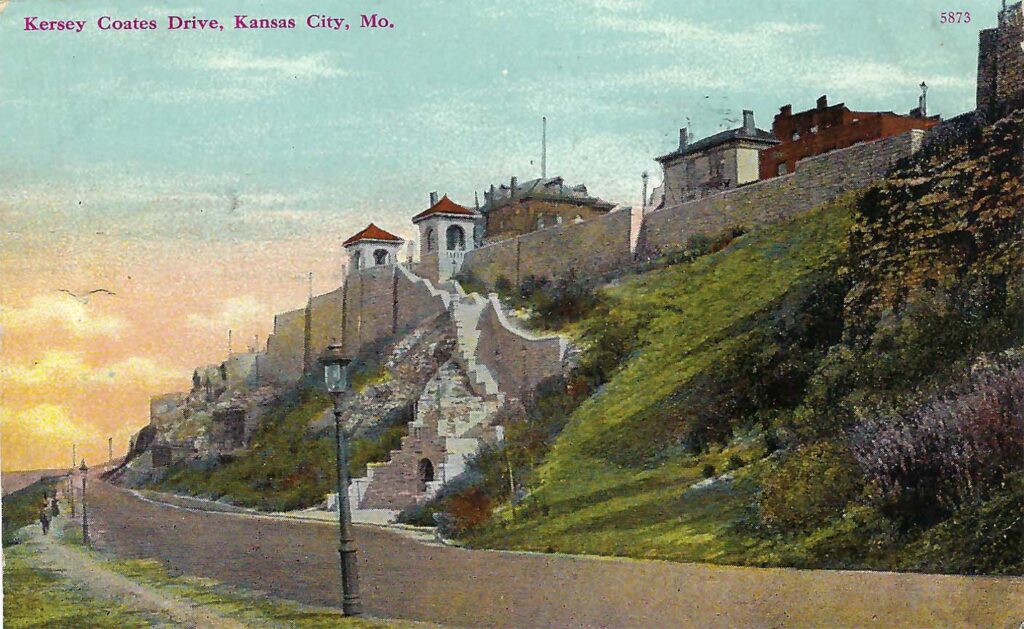
Kessler’s massive overhaul of the West Bluffs began in the late 1800s and was ultimately completed in 1907. Once a shabby, overgrown hill covered with shacks and brush, Kessler made the 30-acre West Terrace Park his flagship project for the fledgling Park Board. The new design incorporated twin “cupola” style towers, constructed of native limestone, overlooking the West Bottoms. A formidable wall and a set of stairs cascaded downward toward Kersey Coates Drive. A fountain with benches lay inside the inlet at the foot of the stairs. Kessler was lauded for his undertaking and was hired by the Park Board to design Kansas City’s internationally recognized park and boulevard system.
A souvenir booklet published in 1920 by the Park Board describing the area, which was part of West Terrace Park, reads, “West Terrace Park occupies the same relative position on the Kaw River Bluffs, in the western part of the city, as North Terrace Park on the Missouri River Bluffs. The shacks, the ugliness that had already taken hold of this park, have been eradicated, and the Kersey Coates Drive (1.18 miles long), above which rise cliffs and terraced walls of masonry after the manner characteristic of certain Italian cities, gives a broad panoramic view of the railroad terminals and factories in the West Bottoms, with Kansas City, Kansas on the hills beyond the Kaw.”
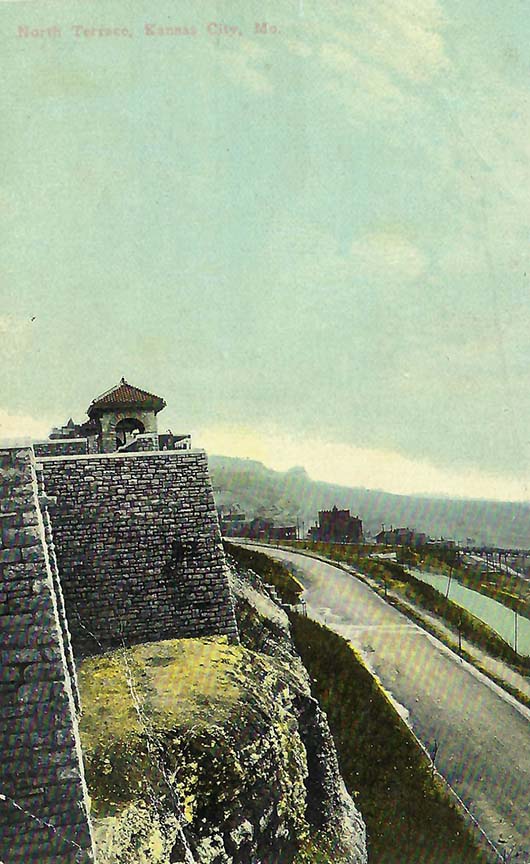
Of the view from the Outlook Tower at 10th Street, the famous artist Lorado Taft said, “I know of no city in America or Europe which has a scene like that. It looks like a hill town in Italy, but is more beautiful than any.”
Construction of the new Buck O’Neill Bridge currently has the western portion of what was Kersey Coates Drive closed, allowing Kansas City Park Department Ambassadors the opportunity to clean up West Terrace Park. In addition to tons of trash and debris being removed from the bluff surrounding Kessler’s limestone edifice, invasive vegetation was trimmed back drastically to once more expose what was left of the 120-year-old limestone retaining wall that makes up a majority of the park. Graffiti tags were also removed from the stone wall and a set of original stairs that had been covered with tons of earth were excavated, exposing what had been buried for over 60 years, essentially since construction of the interstate highway that was completed in the late 1950’s.
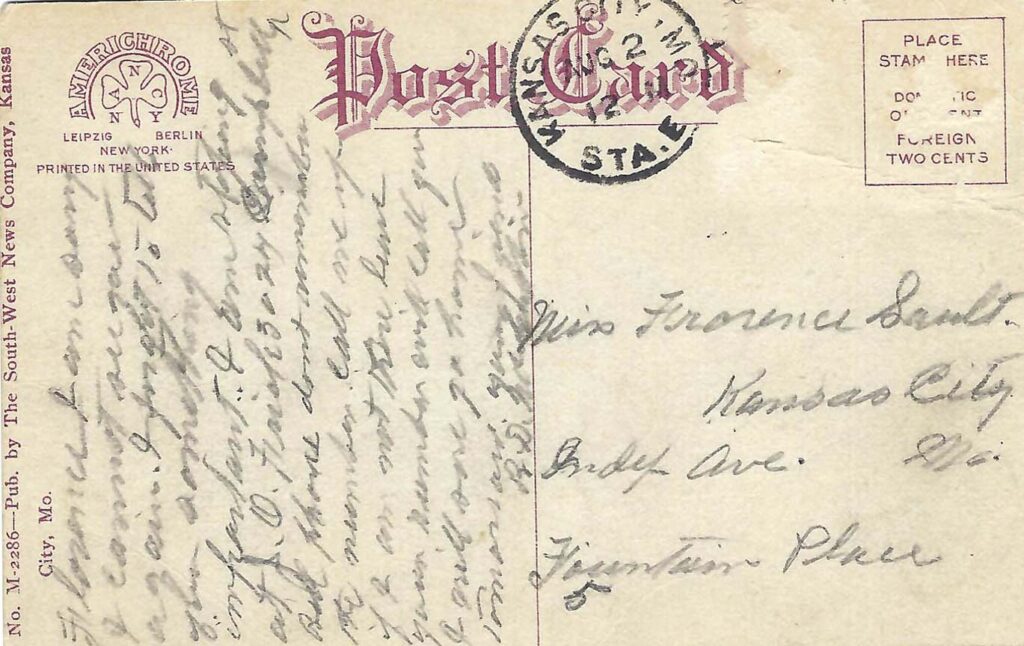
The card was mailed on Aug. 2, 1908, to Miss Florence Sandt, who resided in the luxurious Fountain Place apartments that once stood near the intersection of The Paseo and Independence Boulevard.
The message reads, “Florence, I am sorry I can not see you again. I forgot to tell you something important. I am staying at J.O. Freid’s, 3024 Campbell. Bell phone, don’t remember the number. Call me up, if I am not there, leave your number and will call you. I will go home tomorrow. R.D. McCaslin.”
